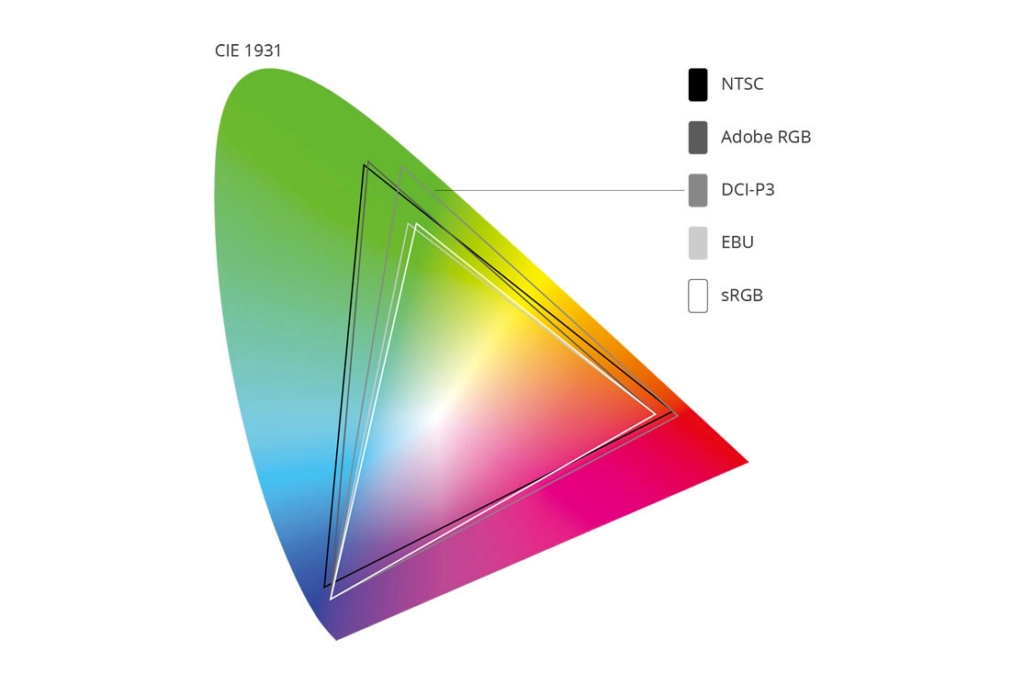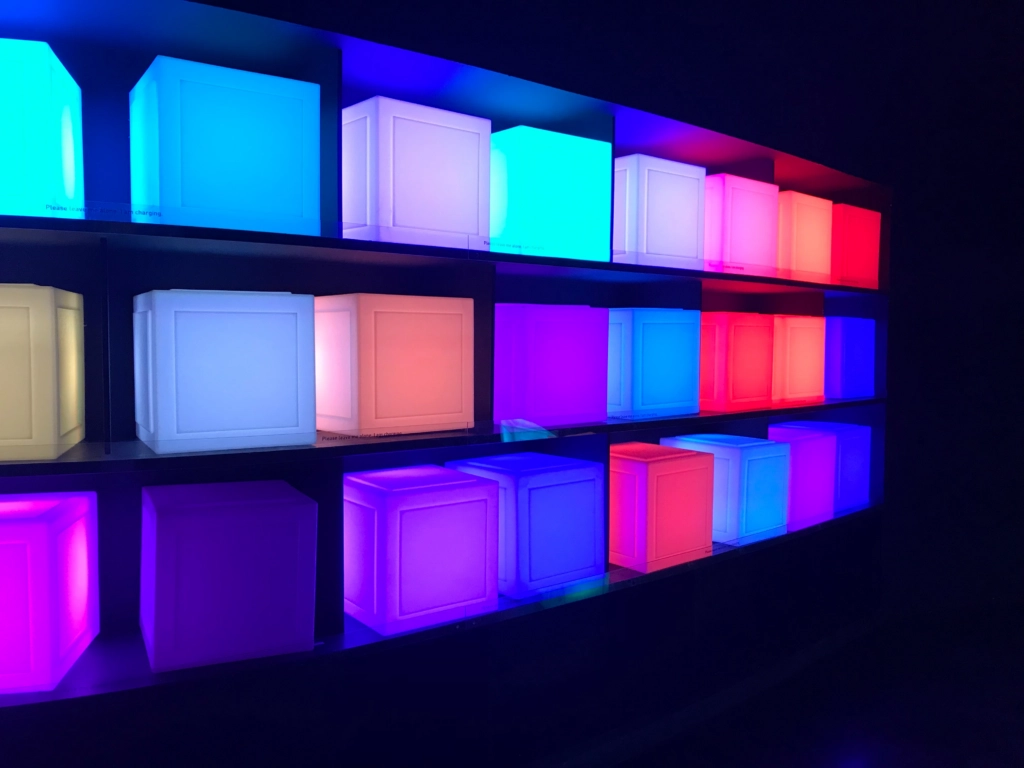
If you go to a TV store, the first thing that catches your eye is probably the same image you see on every TV screen. But the colors of this same image are different in each product. This color difference emphasizes the concept of color gamut.
Colors come in many different forms, from hue to saturation and brightness. There is also this color difference in the screens. The process of producing colors in monitors is an issue that mastering it can be very important for those who are interested in higher image quality. Today we are going to learn about a solution for more quality. A solution called Gamut Rang!
Let’s go!
What is Color Gamut?
The term color gamut or color zone refers to all colors that are visible and recognizable to the human eye. To display this colored area, a horseshoe-shaped image called Chromaticity xy is used. Of course, its 3D mode is also used to display colors.
In the computer graphics industry, color gamut means a range of colors, which are represented by a screen. In fact, it refers to the range of colors that the display can produce. By knowing the color gamut of a screen, one can be aware of the overall ability of that screen to produce different colors.
The color gamut of the screens is represented as a subset of the chromaticity xy diagrams, which is almost triangular in shape. In fact, the color spectrum produced by the display and visible to the human eye is shown in this diagram. The most common gamut color is also sRGB.

What is Color Coverage?
The concept of color coverage of a product is the ability of that product to reproduce and transfer color from its source. For example, if you compare a new generation phone with your older generation, or a TV from the 1990s with today’s TV, you will notice the colors that are displayed in all these products, both in terms of breadth and depth. Also, they differ in how they are produced. This concept expresses color coverage.

What are the types of color gamut?
Below we will get acquainted with different types of color gamut:
Gamut sRGB
This type of gamut is one of the most common and oldest types. This type of gamut can be found from TVs to cameras and monitors. Although this gamut is very popular, only a limited part, about 25 to 33%, shows the visible color range. However, this limitation in covering different colors of the sRGB gamut has not been able to prevent the gamut from spreading. Most computer operating systems, even most websites and digital content, are based on this gamut. This gamut shows almost unreal colors.
Gamut Adobe RGB
The color spectrum of this gamut is wider than the sRGB gamut and represents approximately 50% of the visible color gamut. This gamut also displays colors in a more realistic way. This gamut is not used for videos and is intended for photos only. Adobe RGB has partially fixed the weaknesses of sRGB and covers the cyan and green parts that sRGB could not cover.
Gamut DCI-P3
The color spectrum displayed by this gamut is almost a quarter wider than sRGB and is suitable for displaying and recording digital videos. This gamut is present in all digital projectors that are at the cinema level, as well as in the iPhone X’s internal camera. Unlike the Adobe RGB, which was more widespread in the cyan and green regions, the DCI-P3 expands in all three directions of the primary color, red-green-blue.
For know more about Primary Colors, visit here!
Gamut NTSC
The National Television Standards Committee (NTSC) developed its color standard in the form of a gamut. This gamut is very similar to Adobe RGB but produces slightly different red and blue colors. The NTSC gamut has found its place in monitors designed for professional film editing and photography.
Gamut EBU
The European Broadcasting Union (EBU) also sought to set standards for its production colors. In the past, the EBU color standard was used in the fields of photography, video editing, and graphic design. But today, with the widening of this gamut and the extremely high resolution that its colors create, including 4K, it is used in more common products at the consumer level.

What is the reason for the popularity of large gamut?
Over the years, the most accessible gamut has been sRGB. Also, the price of products with this gamut has been low. This made everyone accustomed to products with sRGB gamut. But in recent years, the display industry has been able to mass-produce products with a wider gamut. As a result, these products are provided to consumers at a lower cost.

What are the factors that increase the quality of the screen?
Wide color gamut:
All monitors are made up of red, blue and green pixels. By combining each of these pixels, the final output colors are produced. These pixels are not visible to the human eye but can be seen under a microscope. Monitors should be able to display a variety of red, green and blue pixels in their gamut. Therefore, it can be concluded that the color gamut is not the only factor for the high quality of the screen.
Color depth:
Another important factor in improving the quality of the screen is the color depth. Color depth is used to determine the number of levels of a color. In fact, the data given to determine the brightness of each pixel is called the color depth. The high color depth indicates that the display can move different colors more accurately. Because more levels are available for each color. And so the process of switching between similar colors happens slowly.
If the screens do not have color depth, banding mode will occur. In this case, the colors close to each other are seen separately. So monitors that have a wide color gamut should have the right color depth.
Delta E:
Delta E is a measure of the amount of color output errors on the display. In other words, Delta E is the difference between the output color and its corresponding primary color in the sRGB gamut. If the value of Delta E is less than one, it is not detectable to the human eye. Thus, in jobs where color is of paramount importance, they prefer to use displays with a Delta E of less than 2. Because if its value is more than 2, it will change the colors and reduce the image accuracy.
Color temperature:
To measure color in digital displays, the color temperature is used in Kelvin, which is between 4,000 and 7,000. Because as an object heats up, it emits different colors at different temperatures. So we can say that the color has a special temperature. To measure the color temperature in monitors, a relative measure called the white dot is used. If the white color goes to red, it means that the color produced by the display is warm. If the white color goes to blue, it means that the color produced by the screen is cold.

The last word
The color gamut has a wide range and many types. Today, with OLED technology, there is no limit to the color spectrum. This has led to a wide range of colors. Wide color spectrums are able to produce pure and native colors and can also display more vivid and realistic colors.









